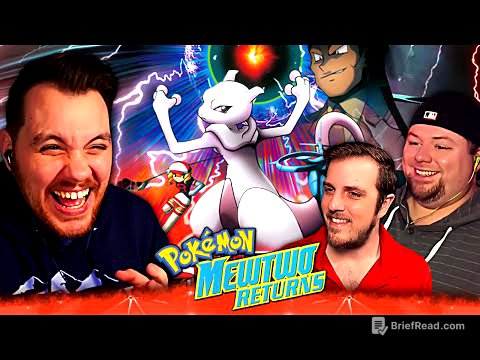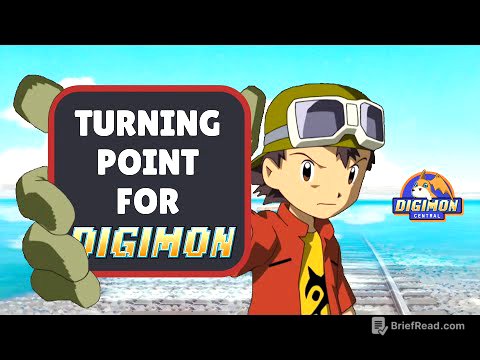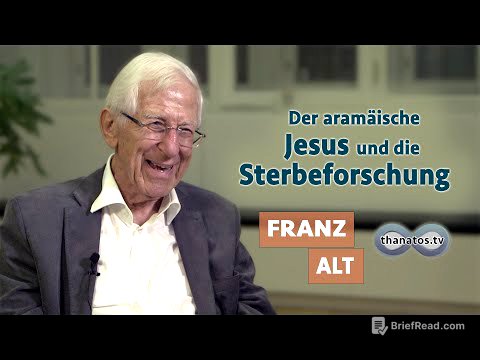TLDR;
This lecture provides an overview of acupuncture and dry needling as complementary therapies in sports rehabilitation. It covers the basic principles, differences, benefits, and mechanisms of action for both modalities, emphasizing their rational use in sports rehab phases. The lecture also addresses a case scenario to demonstrate practical application, contraindications, various techniques, scientific evidence, and the importance of integrating these techniques into a comprehensive rehab program while considering patient communication and psychological impact.
- Acupuncture and dry needling are complementary therapies in sports rehabilitation.
- Acupuncture is based on traditional Chinese medicine, while dry needling is a Western medical approach.
- Both techniques can be integrated into a comprehensive rehab program to enhance neuromuscular control and movement re-education.
Introduction [0:15]
The lecture introduces acupuncture and dry needling as therapeutic modalities used in sports rehabilitation, addressing their increasing use and integration into traditional rehab programs. These techniques complement therapeutic exercise and manual therapy, with growing evidence supporting their effectiveness, especially acupuncture. The session aims to explain the principles, differences, benefits, and mechanisms of action of acupuncture and dry needling, along with their rational application in sports rehabilitation phases, illustrated through a practical case scenario.
Acupuncture Explained [2:24]
Acupuncture is an ancient Chinese medicine modality that involves inserting thin, monofilament needles into meridians, which are considered energy lines along the body. This practice aims to restore balance by resetting the body's energy, known as "key". Acupuncture is used in sports for pain management, inflammation reduction, and muscle tension relief, with research indicating its effectiveness in treating musculoskeletal conditions.
Dry Needling Explained [3:12]
Dry needling is a Western medical approach focused on myofascial trigger points. It involves inserting solid needles into these trigger points or taught bands to stimulate muscle twitches and reset local muscle tone. Developed from acupuncture tools, dry needling is distinct in its usage, being more anatomically based and local, rather than energy-related or meridian-based.
Key Differences [3:47]
The key differences between acupuncture and dry needling lie in their philosophies and techniques. Acupuncture is based on energy-related mechanisms and follows meridian-based techniques, while dry needling is more neuromuscular and targets trigger points or taught bands. The regulation and scope of these practices also vary depending on the region where they are used.
Mechanism of Action and Indications [4:18]
The mechanism of action involves stimulating afferent nerves, increasing local blood flow, and releasing chemical substances like opioids and neurotransmitters. This process reduces pain through the pain gate theory and affects myofascial changes and muscle tone. In sports, it is indicated for muscle tightness, spasms, chronic tendinopathies, and post-surgical recovery, with acupuncture showing evidence in pain reduction and healing, especially after knee surgeries. It is also used for myofascial pain syndromes in sports.
Contraindications and Techniques [5:30]
Contraindications for needling include bleeding disorders, open or infective wounds, and needle phobia. Pregnancy is a relative contraindication. Acupuncture techniques vary by region, including body acupuncture, auricular therapy (ear therapy), electro-acupuncture, and scalp acupuncture. Dry needling uses a piston technique, either superficial or deep, to create a local twitch response, often followed by stretching or therapeutic rehab protocols.
Case Scenario: Reika the Volleyball Player [6:46]
Reika, a volleyball player with a year-old elbow injury causing persistent stiffness, is presented as a case scenario. The analysis considers her chronic myofascial problem, the demands of volleyball on her elbow, and the need for a comprehensive assessment. This assessment includes evaluating mobility, flexibility, range of motion at the shoulder and elbow, scapular movement, joint structure, soft tissue involvement, muscle length, and strength.
Treatment Approach for Reika [9:59]
Assuming soft tissue is the primary issue, dry needling is recommended to address myofascial thickening or trigger points. This anatomical approach involves identifying and palpating the specific cause of the problem. Dry needling sessions are complemented with a therapeutic program, including stretching and exercises to improve soft tissue tightness, range of motion, and strength. Addressing biomechanical compensations and technique is crucial, with corrective exercises instituted based on biomechanical assessments.
Scientific Evidence [11:40]
There is significant level one evidence supporting acupuncture, particularly for low back pain and knee osteoarthritis, with Cochrane reviews showing modest evidence. While commonly used in sports to complement therapeutic exercise and rehab programs, there is a need for more high-quality randomized control trials in sports-specific scenarios. Dry needling reduces pain and improves range of motion in myofascial pain, with EMG studies showing changes in muscle tone. It is often combined with manual therapy, stretching, or therapeutic exercise, and there is a growing number of randomized control trials in physical therapy settings.
Integration and Communication [13:11]
Integrating acupuncture and dry needling into rehab programs provides a comprehensive, holistic approach, enhancing neuromuscular control and movement re-education. The utilization of these modalities should be tailored to each individual, considering their sport demands and rehab phase, and should complement traditional physiotherapy. Proper patient communication is essential, involving explaining the procedure, rationale, needle types, and potential post-needling soreness, while also sharing success stories and research evidence.
Psychological Impact and Holistic Approach [15:30]
Both dry needling and acupuncture have a psychological impact, fostering a mind-body connection, reducing anxiety and stress, and improving body awareness. Placebo and expectancy effects can play a role in the outcome. These techniques can alleviate stress in injured athletes and boost confidence in the rehab program. Modalities should be combined in the patient's best interest, backed by mobility drills, stretching, manual therapy, and alternative therapies to enhance neuromuscular re-education.
Monitoring Progress and Conclusion [17:15]
Monitoring progress is crucial, using subjective and objective measures like visual analog scales, pain scores, functional range of motion testing, and patient-reported outcome measures. While both techniques have limitations and are not suitable for all athletes, they can be valuable tools when used safely and with informed consent. Acupuncture and dry needling are complementary therapies that should be part of a multimodal plan, with growing evidence supporting their use in chronic myofascial pain and improving post-surgical quality of life.









